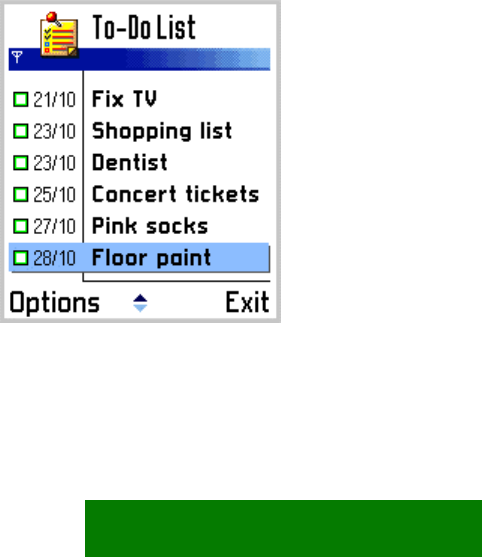
If the new choice item is not visible, all items are moved in the view to the
appropriate direction so that the new item becomes fully visible. For example, if
focus is moving down and the new item is currently below the bottom edge of
the view, the items are moved up.
·
· When moving the choice items in the view, they are only moved the minimum
amount necessary. For example, when moving items up to get the next one under
the bottom edge visible, the item moves to the lowest allowed position in the
view.
By default, a list is a queue. This means that it is not allowed to browse forward from
the last item or browse backward from the first item. If the user attempts this the list
does not react; there is no feedback except the normal keypad tone.
It is also possible to specify the list to be a loop, which means that it is possible to
browse forward from the last choice item – this step leads to the first item in the list
– and vice versa.
The display of a looping list jumps from the last item to the first item in a non-
continuous way, so that the first item is shown on top of the view, just as it
would appear if scrolling backward through the whole list. (This is due to EPOC
implementation and is different from traditional Nokia style where the loops
appear continuous, with no jump in the looping point.)
The scrolling as specified here is ‘traditional style’ where the highlight moves
until the lower or upper edge of the list requires the content to scroll. Other,
potentially better methods could replace this without consequences to other
features.
Scrolling indicator for lists
Lists have no scroll bar. There is, however, a scrolling indicator component which
indicates the relative position of the item in focus within the list.
The scrolling indicator is only displayed when all items in the list can’t fit on the
display simultaneously.
Figure 5-3. Scrolling indicator in the control pane. The downward arrow is dimmed
because the focus is near the end of the list.
27


















